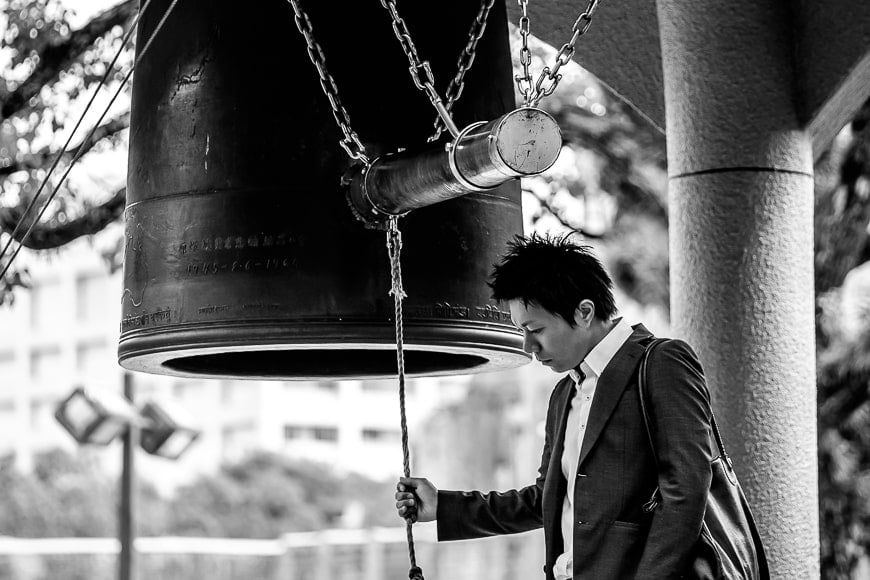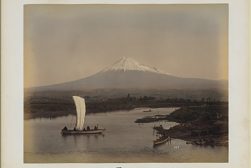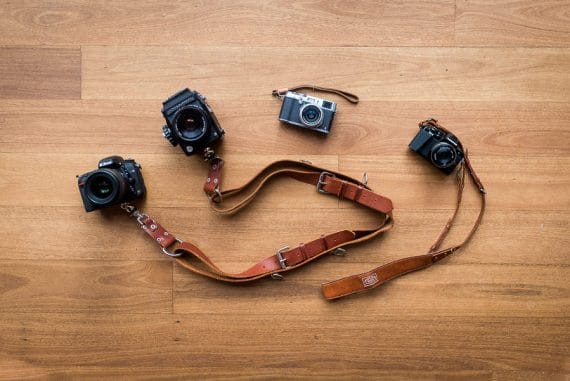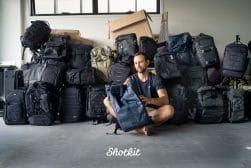







Greg Cromie
Street | Last Updated: March 21, 2024
My name is Greg Cromie and I am a photographer and content creator living in Melbourne, Australia. I am primarily a street photographer with a love of exploring Japan.
My photographic journey began back in 1993 at art school where I learnt film photography. We were taught photographic skills, rolling our own films, darkroom time, printing – the whole works.
I went on to pursue a different direction and my use of photography as an art form faded away.
It was not until 2013 after a personal tragedy left me broken and mostly housebound, my sister recommended we both get cameras. Her plan was to give me something to focus on, a new pursuit and hopefully one to get me back out into the world.
It worked, of course, as we both picked up a Canon 70D with a kit lens. I spent most of those early days just shooting stuff.
Looking back it was pretty aimless but nonetheless it was a hobby that got me looking up at the world again.
After upgrading my gear, I found that I was doing the odd job but also carrying a lot of kit. This really impacted my joy of photography as I was getting a bad back and sore neck every time I took my gear out.
Then one day a friend opened my eyes to a neat little Fujifilm camera known as the X100. I was immediately enamoured with this amazing little pocket camera with its manual controls and film simulations. I immediately picked one up and once again fell in love with photography – I have been in love ever since.
Before long, I sold all of my Canon gear and grabbed a Fujifilm X-T1 with an XF 16mm f/1.4. Suddenly I wanted to get out and about on the streets and explore my world.
I took up street photography mostly by accident. For me, it was like snorkelling on a tropical reef. From the top, it was just water, but with the protection of a camera between me and the world, I was able to observe life.
I was able to see that life went on; that laughter, humility, and love still existed. Photography proved to be a key player in my grief process.
Before long, I was out shooting the street every chance I got. I also started to get gigs for events, engagements and weddings as people really wanted a candid approach to documenting their experiences.
In 2015, I made a huge leap and booked a trip to Japan. I have always held a long fascination with Japan since childhood and desperately wanted to explore and photograph such an incredible culture.
Since that first trip, and the thousands of images captured, I have been back to Japan pretty much every year.
On those trips, I concentrate on the connection between the people and the places. From the hyper-futuristic streets of Tokyo to the quiet and spiritual laneways of Kyoto, I look at how people interact with their world.
I have only scratched the surface of my Japanese experiences and look forward to many return trips with camera in hand.
Main Gear Talk
As mentioned, I began my photography career with Canon but soon made the full move to Fujifilm after using the original X100. Since then, I have owned or used almost every Fujifilm X Series camera body and lens.
I have had the good fortune as a blogger to have written reviews about Fujifilm for many sources including Fujifilm community groups, Fujifilm Australia, and right here on shotkit.com.
For personal use, I have mostly stuck with the XT series and currently own the Fujifilm X-T3. My gear has evolved a lot over time from owning several large Fujifilm primes and Red Badge zoom.
Now, I have streamlined my kit considerably, in terms of lenses, as I prefer the newer, smaller Fuji primes. I don’t do a lot of studio work, however still own a mandatory flash, trigger, and lighting kit.
The biggest benefits with the Fujifilm kit is size and weight. Being able to toss a flagship body, second smaller body, and three lenses into a small bag and carry that all day, without complaint, is amazing.
Further to this, thanks to the form and function of Fujifilm cameras, they bring a true joy of photography. Being able to utilise the manual controls for all necessary functions really teaches you the core of photographic principals.
Cameras
Fujifilm X-T3: I have owned each of the Fujifilm X-T cameras and the latest is the Fujifilm X-T3. This is a fantastic camera and is my workhorse body for shooting events, portraits, and sometimes street.
I chose this camera as it has the latest and greatest Fujifilm sensor and processor. It boasts lightning-fast autofocus and access to an incredible range of Fuji lenses. What’s more, the X-T3 has full manual control via easy to access and master control dials – this camera is a joy to use.
Fujifilm X-E3: This is a recent purchase after I reviewed the camera for shotkit.com. I was looking for a second body for a couple of reasons.
The first is that I am a prime shooter so having a second prime on a second body works for events. The second is that as a product reviewer, I often have to have my Fujifilm X-T3 in the product shot with a strap or bag. Having a second camera makes that part of my job easier.
Fujifilm X70: This is a little unsung hero from the Fujifilm line up that is now developing a bit of a cult following.
Released at the same time as the X-Pro 2, this little camera was overshadowed and lost in the noise. However, it is an amazing camera with the same processor and sensor as the Fujifilm X-T1.
It boasted the first Fuji touch screen that also flipped out to 180°. It featured film simulations, a hot shoe, and a mic jack.
With a fixed 18mm lens, this has proven a perfect street photography camera. On my last trip to Tokyo, I shot half of my images with this camera making my daily carry exceptionally light.
Lenses
Fujifilm XF 16mm f/2.8: This is a relatively new lens and, once again, I fell in love with it after I reviewed a loan copy.
This lens provides an exceptional field of view that is great for street, architecture, and landscape. It is fully weather-sealed and has lightning-fast autofocus with an exceptional edge to edge sharpness.
Fujifilm XF 23mm f/2: This is my favourite lens. It is small, compact, and weather-sealed and pairs well with either of my cameras.
This lens has the fastest autofocus in the whole Fuji range and is a perfect street or event lens. On a recent trip to Japan, I walked the street with the X-T3 and this lens. Perfect for rainy days in Shinjuku alleyways.
Fujifilm XF 50mm f/2: I found that I was wanting a little more reach and compression, especially when it came to shooting products and portraits.
This 50mm is an amazing lens and gets great subject separation with a pleasing background blur. Again, this is a tiny lens and a key part of my kit.
Bags/Straps
ONA Prince Street: I love the look of leather and canvas bags, as they are a premium product that does not scream camera bag.
The ONA range is gorgeous and well worth the asking price as these bags will last you a lifetime.
The ONA Prince Street is a perfect size for my kit, as I can fit all three cameras and three lenses plus all my necessary bits and pieces. The canvas stretches over time and weathers nicely. While not completely weather-sealed, the outer coating is weather-resistant, and that works for me.
CURA Camera Straps: I currently use a pair of CURA silk handwoven camera straps. These are both wrist straps, as I no longer enjoy the feeling of a camera hanging from my neck.
I purchased these from Yodobashi Camera in Tokyo. Now that I have a third camera I really must pick up another one. Perhaps another trip to Japan is needed after all!
Hardware & Software
I run an iMac (21.5”) with a few upgrades to manage photo processing. I increased the processor to a 3.4GHz Intel Quad Core i5 and boosted memory to 16GB.
I didn’t focus so much on internal storage as I also run three Lacie Portable Hard Drives with one being 4TB and the other two being 2TB each. These run off Thunderbolt or USBC drives.
I find the boost in performance and the speed of the external drives more than adequate for editing the files that I create. The X-T3 and the X-E3 both run a 26.1Mp sensor, so the RAW files are not too bad.
For editing, I rely solely on Lightroom to edit my RAW files.
I only ever shoot in RAW and I like how Lightroom interprets the Fujifilm film simulations should I want to apply them. I also have my own presets that I have created from my many trips to Japan.
Misc.
I always pack with me my CURA cleaning kit: Another purchase from Japan made by the same company making the straps. The kit includes a small bottle of alcohol-free lens cleaning solution, a kabuki brush, and a stack of lens cleaning tissues.
Final Words
I had never traveled outside of Australia before that first trip to Tokyo in 2015. It was such a huge step out of my comfort zone and I learnt so much about myself and the world.
I remember after arriving at the Tokyo airport at night, I travelled by train to Shibuya Station. The train doors opened and I was faced with what felt like a million people on the platform.
They were mostly all young and all dressed as if for some bizarre costume competition. I was swept along with the crowd and found myself at the famous Scramble Crossing.
The intensity of the situation and the photographic opportunities completely buried my anxiety.
I quickly dropped my suitcase at my hotel and did not return again until 5 am in the morning. I spent the whole night capturing Tokyo and its citizens.
My advice to anyone nervous about travelling is to just get out there and do it. Your mind will be expanded, your soul will be enriched, and your photography will significantly exceed your own expectations. G
www.gregcromie.blog | @gcromie

Check out these 8 essential tools to help you succeed as a professional photographer.
Includes limited-time discounts.












